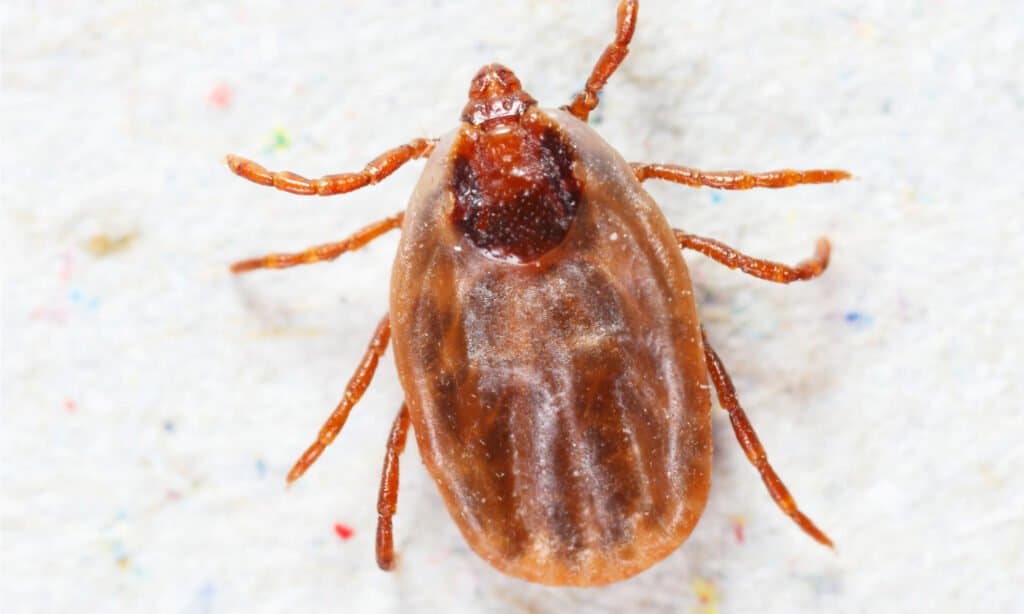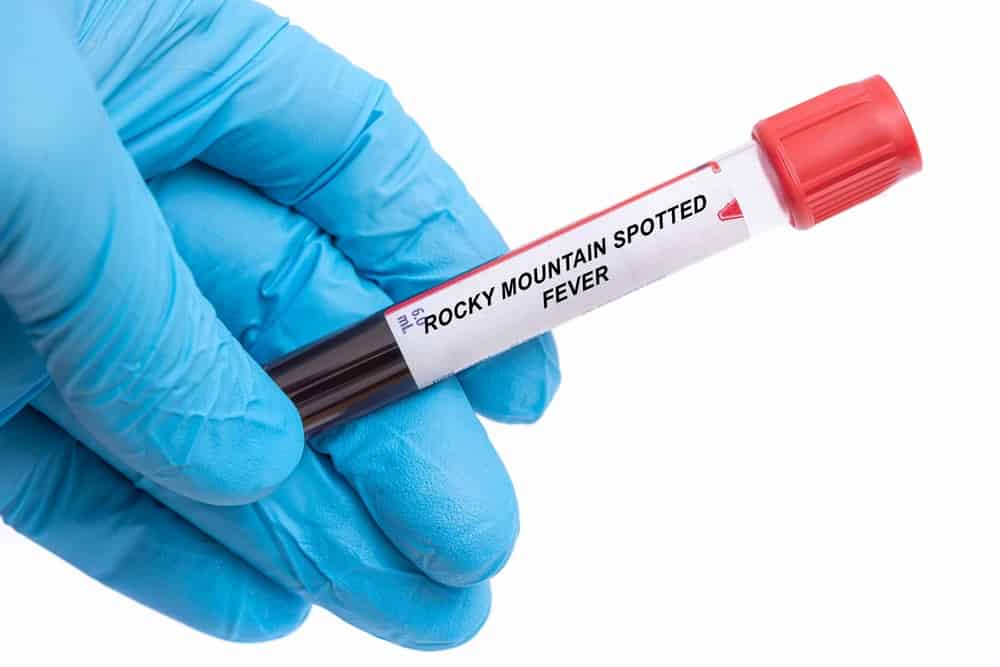Ticks are a natural part of outdoor life. If you’ve spent any time outside, you have probably encountered at least one, even if you didn’t realize it. They live in tall grass, shrubs, leaf piles, and trees and get transferred to your clothes or skin when you walk past. They can even jump onto your dog before moving over to you. And most tick bites are harmless, causing a small red bump without any symptoms. However, some pass serious diseases onto humans, which can even be life-threatening. Learn about tickborne disease, the symptoms to look out for, and the long-term prognoses.

Black-legged ticks transmit several tickborne-diseases, including Lyme disease, which is the most common in the United States.
©iStock.com/Ladislav Kubeš
Lyme Disease
Lyme disease is the most common tick-borne disease in the United States. Borrelia burgdorferi is the primary bacteria that causes Lyme disease, and it is transmitted through the bite of an infected black-legged tick.
Symptoms include:
- Headache
- Fever
- Fatigue
- Facial paralysis
- Body aches
- Characteristic bull’s-eye rash
It can begin to affect the heart, nervous system, and joints if symptoms go untreated. Doctors can typically diagnose the disease by the appearance of the rash and other lab tests. And it can clear up within a few weeks with antibiotics. Lyme disease is most common in the Northeast, Mid-Atlantic, North-Central, and along the West Coast.
Powassan Virus
Groundhog ticks, squirrel ticks, and black-legged ticks sometimes feed on infected rodents and spread the Powassan virus to unsuspecting humans. It is relatively rare, although cases are rising. And it mainly affects those in the Northeast and around the Great Lakes region from spring to fall.
Most people don’t have any symptoms. But those that do, begin experiencing them between one week and one month after being bitten. Fever, headache, weakness, and vomiting are the initial symptoms. But some people can experience severe diseases, such as brain infections and meningitis. Around one out of ten people with severe disease from the virus will die. There are currently no treatments for the Powassan virus, and antibiotics will not work. Most will recover with rest and fluids. But those with severe symptoms will need emergent medical care.

Many ticks feed on infected rodents and spread viruses and infections after biting a human.
©7th Son Studio/Shutterstock.com
Tickborne Relapsing Fever (TBRF)
The Borrelia bacteria causes TBRF and is transmitted by soft ticks that live in rodent burrows. Some rustic cabins in the mountains of the Western United States have infestations of rodents and soft ticks, which latch onto people and pets. This rare infection causes a high fever of over 103 degrees, headaches, and body aches. It is often diagnosed by the telltale fever pattern of three days of fever, followed by seven days of no fever, and another three days of fever. This process can continue several times. However, antibiotics will take care of the infection.
Colorado Tick Fever
Rocky Mountain wood ticks in the Western United States and Canada spread Colorado tick fever through bites. They feed on infected rodents and other animals, like elk and deer, passing the viral disease to people. They live at high elevations and typically infect humans when they go hiking or camping in the mountains. Symptoms can begin up to two weeks after the initial infection, and symptoms include fever, chills, headache, fatigue, abdominal pain, vomiting, rash, and weakness. Most people will have mild symptoms and recover within several weeks. But others may experience severe illnesses affecting the central nervous system. There is no treatment or prevention for Colorado tick fever. The virus has to run its course but can be managed by healthcare providers.

Diagnosing tick-borne disease can be difficult. But early treatment is often critical.
©iStock.com/dusanpetkovic
Anaplasmosis
Caused by the bacterium Anaplasma phagocytophilum, Anaplasmosis is a disease caused by black-legged tick bites. This disease affects people throughout most of the Eastern United States and along the West Coast. Symptoms begin one to two weeks after the bite and include intense headache, fever, chills, nausea, vomiting, diarrhea, and weakness. Early treatment with antibiotics can prevent severe illness and death. If left untreated, people can go into respiratory failure and organ failure, eventually leading to death.
Babesiosis
Babesiosis is a parasitic disease caused by microscopic parasites found in the nymph stage of the black-legged tick. This disease mainly occurs in the Northeast and Upper Midwest and peaks during the summer. Most people don’t have any symptoms, while others experience flu-like symptoms. The parasite can also cause anemia that leads to jaundice and dark urine. Immunocompromised people can develop severe, life-threatening diseases and will require immediate treatment. Thankfully, several prescribed drugs treat this disease. Those who have no symptoms most likely will not need medical care.

RMSF is a bacterial disease spread by dog ticks and wood ticks throughout most of the United States.
©luchschenF/Shutterstock.com
Tularemia
Tularemia is a disease that people can be exposed to in multiple ways, such as tick bites, deer fly bites, contact with infected animals, drinking contaminated water, and inhaling agricultural dust. The dog tick, wood tick, and lone star tick can infect humans. Once the bacteria enters the body, symptoms can range from mild to severe. They include high fever, swollen lymph nodes, ulcers, cough, chest pain, and difficulty breathing. It is a rare disease and can be difficult to diagnose as it appears like many other diseases. Most patients fully recover within several weeks after doses of antibiotics.
Rocky Mountain Spotted Fever
RMSF is a bacterial disease spread by dog ticks and wood ticks throughout most of the United States. Early symptoms include headache and fever. But they can progress to very serious illness or death. The most common symptoms include rash, nausea, vomiting, stomach pain, and muscle pain. The rash occurs a few days after the fever begins. Some patients who recover from late-stage Rocky Mountain spotted fever can have permanent damage, such as amputations, hearing loss, paralysis, and mental disability. Early antibiotic treatment can prevent serious illness and death.
Read this to learn more about RMSF, a serious bacterial disease.
Note: AZ Animals does not attempt to give medical advice. If you suspect you or someone you know has a tickborne disease, seek medical attention immediately.
The photo featured at the top of this post is © iStock.com/epantha
Thank you for reading! Have some feedback for us? Contact the AZ Animals editorial team.







